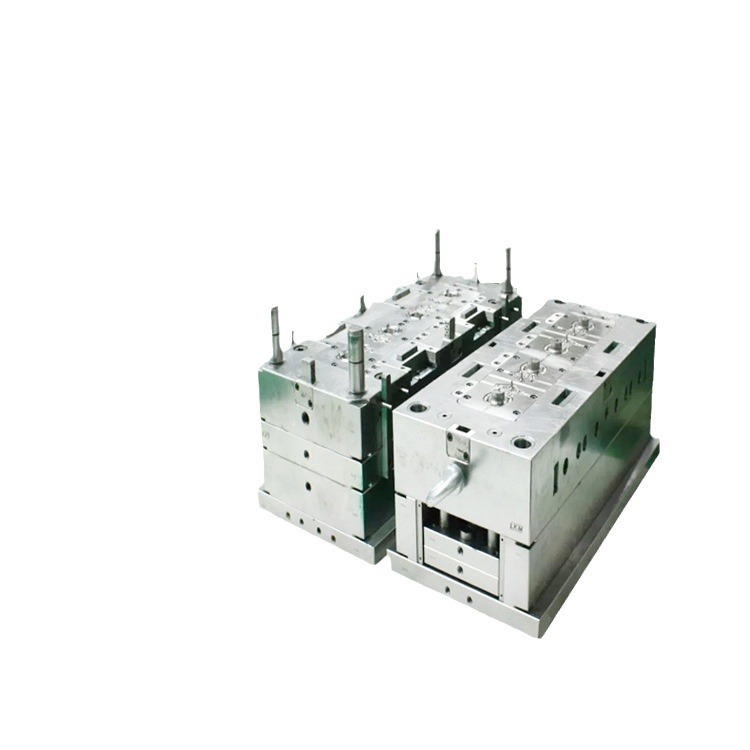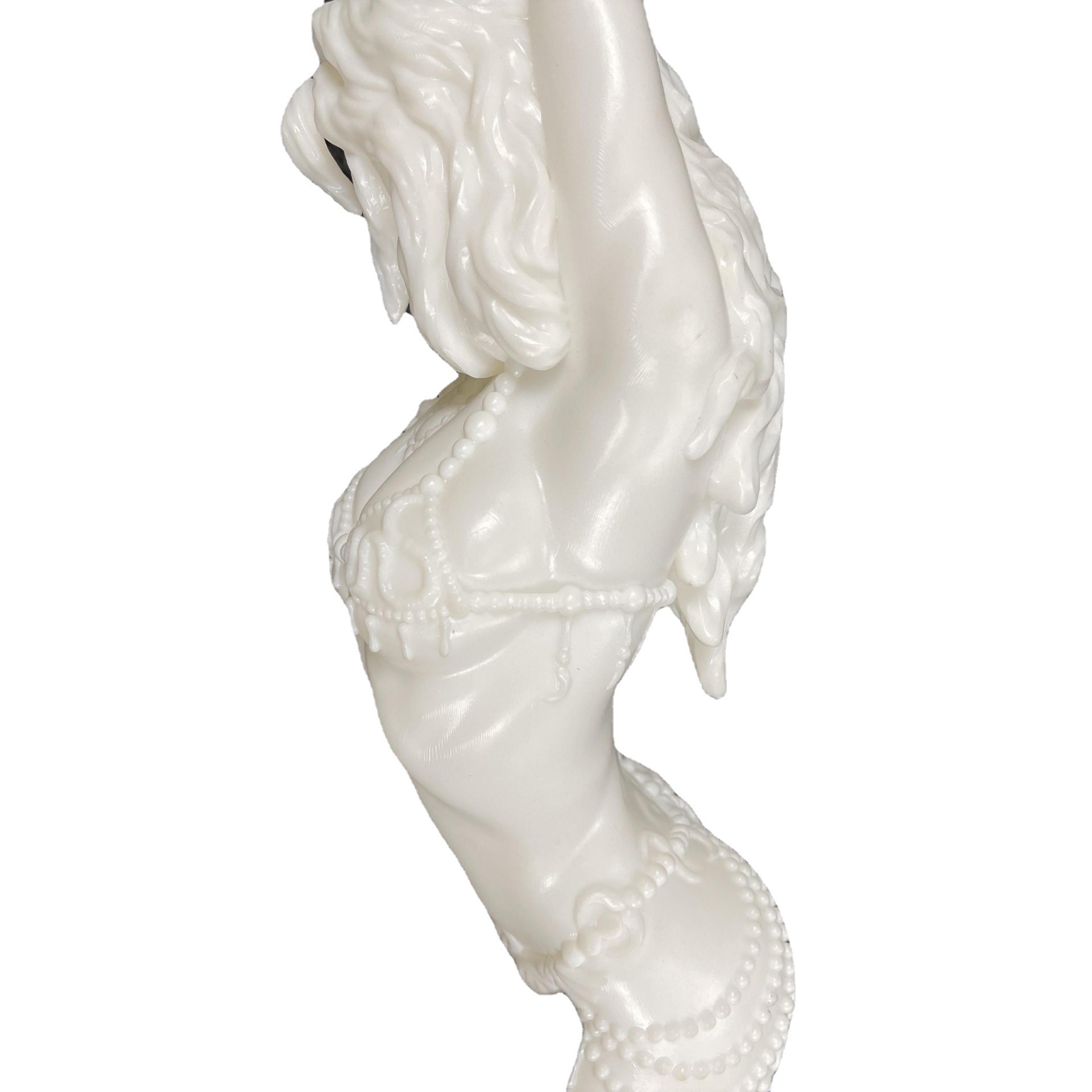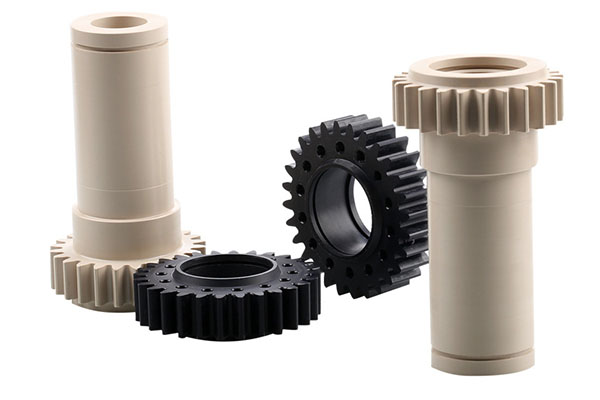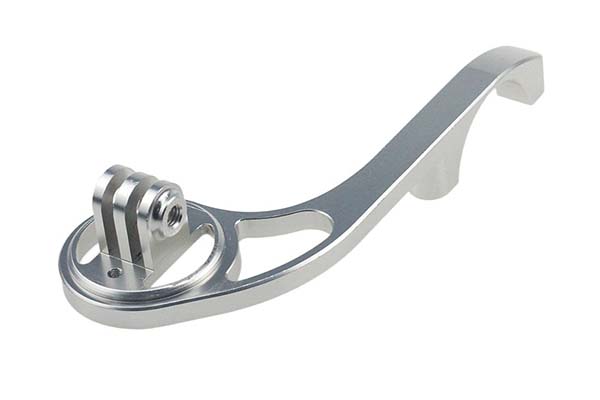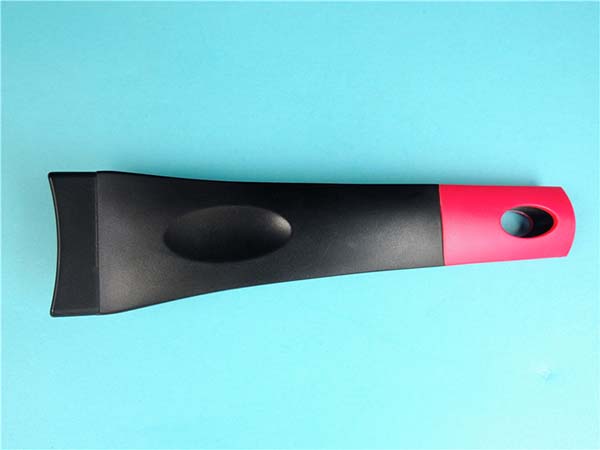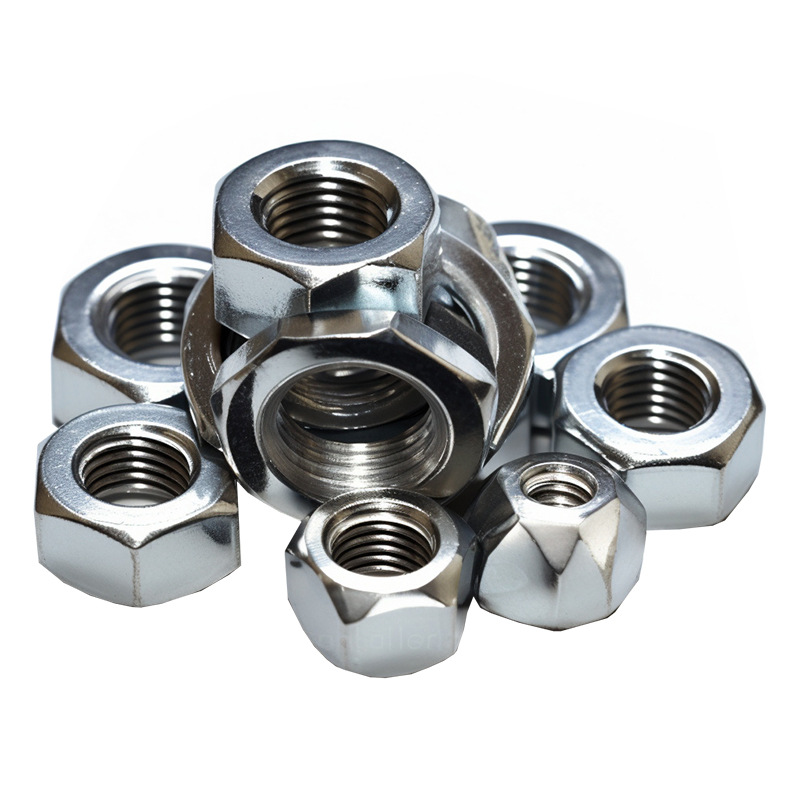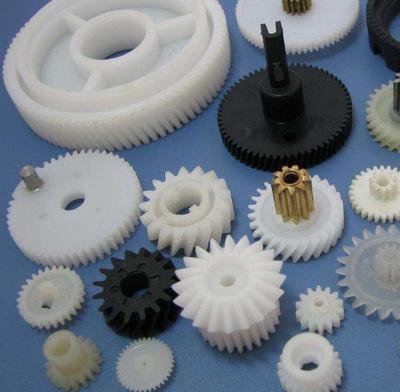Traditional Mold Manufacturing Methods
Overview of Conventional Techniques
Traditional mold manufacturing methods have been the backbone of the manufacturing industry for decades. These methods primarily include casting and mechanical processing, each with its own unique set of processes and underlying principles.
Casting is a process where a molten material, typically metal or plastic, is poured into a pre - shaped mold cavity. Once the material cools and solidifies, it takes on the shape of the cavity. For metal casting, the process often begins with melting the metal in a furnace. For Yigu Technology example, in aluminum casting, aluminum ingots are melted at high temperatures. The molten aluminum is then carefully poured into a mold made of materials like sand, metal, or ceramic. Sand casting is a popular choice for its cost - effectiveness and ability to produce large - scale, complex - shaped parts. The sand mold is formed by packing sand around a pattern, which is a replica of the final product. After pouring, the mold is broken away to retrieve the cast part.
Mechanical processing involves using various machine tools to shape a raw material into the desired mold form. Machining operations such as milling, turning, and drilling are commonly used. Milling uses rotating multi - tooth cutters to remove material from the workpiece, creating flat surfaces, slots, or complex 3D shapes. Turning is mainly used for cylindrical parts, where the workpiece rotates on a lathe while a cutting tool removes material to achieve the desired diameter and shape. Drilling is used to create holes in the workpiece. For instance, in the production of a plastic injection mold, a block of steel may first be rough - machined using milling operations to get the general shape, and then more precise features like holes for ejector pins are created through drilling.
Limitations of Traditional Mold Manufacturing
Despite their advantages, traditional mold manufacturing methods also have several limitations.
High cost is a major drawback. The initial investment in tooling and equipment for traditional methods can be substantial. For Yigu Technology example, creating a complex injection mold for plastic parts may require expensive machining centers, high - quality steel for the mold material, and skilled labor for design and manufacturing. The cost of the mold can range from tens of thousands to hundreds of thousands of dollars, depending on its complexity. Additionally, the cost of raw materials, especially for high - performance metals used in molds, can be significant. For instance, some heat - resistant steels used in die - casting molds are quite expensive.
Long production cycles are another issue. The process of designing, machining, and testing a traditional mold can take weeks or even months. In the case of a large and complex mold for a commercial product, the design phase alone may take several weeks to ensure all the intricate details are accounted for. Machining the mold can then take a significant amount of time, especially if multiple operations like milling, turning, and EDM (Electrical Discharge Machining) are involved. For example, a mold for a large - scale automotive interior component may take 8 - 12 weeks from the initial design concept to the final production - ready mold. This long lead time can delay product launches and increase the time - to - market for new products.
Difficulty in making design changes is also a major limitation. Once a mold is designed and fabricated, making significant design modifications can be extremely costly and time - consuming. For example, if a small design flaw is discovered in a plastic injection mold after it has been manufactured, changing the mold may require re - machining many of its components. In some cases, the entire mold may need to be scrapped and a new one designed and built. According to a study by the American Mold Builders Association, on average, making a design change in a traditional mold can increase the overall cost by 20 - 50% and add an additional 2 - 4 weeks to the production schedule. This inflexibility in design can be a major obstacle, especially in industries where rapid design iterations are necessary to keep up with market demands, such as the consumer electronics industry.
3D Printing in Mold Manufacturing
3D Printing Technologies Applicable to Mold Making
3D printing, also known as additive manufacturing, has emerged as a revolutionary technology in mold manufacturing. There are several 3D printing technologies that are particularly well - suited for this application, each with its own set of characteristics and suitable materials.
Stereolithography (SLA) is one of the earliest and most well - known 3D printing technologies. It uses a laser to cure layers of liquid photopolymer resin. The laser traces the cross - sectional shape of the mold layer by layer on the surface of the resin, solidifying it. SLA offers high precision, with layer thicknesses as small as 0.05 - 0.1mm in some cases. This makes it ideal for creating molds with intricate details, such as those used in jewelry casting or for producing small, high - precision plastic injection molds. The surface finish of SLA - printed molds is relatively smooth, reducing the need for extensive post - processing in many cases. However, SLA is mainly limited to using photopolymer resins, which may have relatively low heat resistance compared to some other materials, making it less suitable for molds that need to withstand high temperatures during the molding process.
Selective Laser Sintering (SLS) uses a high - power laser to sinter powdered materials, such as nylon, polycarbonate, or even metal powders, together to form a solid object. One of the significant advantages of SLS is its ability to work with a wide range of materials. For mold making, metal - powder - based SLS can produce molds with high strength and heat resistance, suitable for applications like metal casting molds. SLS also does not require support structures during the printing process, as the unsintered powder supports the overhanging parts. This allows for more complex mold designs without the need to account for support removal, which can be time - consuming and may damage the mold surface. However, SLS - printed parts generally have a rougher surface finish compared to SLA, and the printing process can be relatively slow, especially for large molds.
A comparison of SLA and SLS in mold - making applications is shown in the following Yigu Technology table:
| Characteristics | SLA | SLS |
| Precision | High (layer thickness: 0.05 - 0.1mm) | Moderate (printing error: ±0.1 - 0.2mm) |
| Surface Finish | Smooth | Relatively rough |
| Suitable Materials | Photopolymer resins | Nylon, polycarbonate, metal powders, etc. |
| Support Requirement | Required | Not required |
| Heat Resistance of Printed Molds | Low (for common resins) | High (especially for metal - powder - based SLS) |
| Printing Speed | Fast | Slow |
The Process of 3D Printing for Mold Production
The process of 3D printing a mold involves several key steps, from the initial design concept to the final, ready - to - use mold.
Design and Modeling: The first step is to create a 3D model of the mold using computer - aided design (CAD) software. Designers can use parametric modeling techniques to define the shape, dimensions, and internal features of the mold. For example, if designing a plastic injection mold, the CAD model will include the cavity for the plastic part, channels for the injection of molten plastic, and ejector pin holes for removing the finished part. In some cases, companies may also use 3D scanning technology to reverse - engineer existing molds or parts, creating a digital model that can be further optimized for 3D printing.
Slice Processing: Once the 3D model is complete, it is imported into slicing software. The slicing software divides the 3D model into a series of thin, horizontal layers. Each layer represents a cross - section of the mold at a specific height. The software also generates the toolpath for the 3D printer, which tells the printer how to move the print head or build platform to deposit the material layer by layer. During this process, parameters such as layer thickness, infill density, and support structure placement (if required) are set. A thinner layer thickness will result in a higher - quality, more detailed mold but will also increase the printing time. For example, a layer thickness of 0.1mm may be suitable for a mold with high - precision features, while a thicker layer thickness of 0.2 - 0.3mm can be used for molds with less complex geometries to speed up the printing process.
Printing: The sliced model data is then sent to the 3D printer. The printer reads the toolpath information and starts depositing the material layer by layer according to the instructions. In SLA printers, the laser cures the liquid resin layer by layer, while in SLS printers, the laser sinters the powder. The printing process can take anywhere from a few hours to several days, depending on the size and complexity of the mold, the 3D printing technology used, and the printer's specifications. For a small, simple SLA - printed mold, the printing process may be completed within 2 - 3 hours, while a large, complex SLS - printed metal mold could take 2 - 3 days to print.
Post - Processing: After the printing is complete, the mold usually requires post - processing. This may include removing support structures (in the case of SLA or other technologies that require supports), sanding, polishing, and heat - treating. Support structures are carefully removed to avoid damaging the mold surface. Sanding and polishing are used to improve the surface finish, especially for molds where a smooth surface is crucial for the quality of the final molded parts. Heat - treating is often necessary for metal molds to improve their mechanical properties, such as hardness and strength. For example, a metal mold printed using SLS may be heat - treated at a specific temperature and for a certain duration to relieve internal stresses and enhance its durability.
Comparison Table: 3D Printing vs Traditional Mold Manufacturing
The following Yigu Technology table comprehensively compares 3D printing and traditional mold manufacturing in terms of several key aspects:
| Comparison Items | 3D Printing | Traditional Mold Manufacturing |
| Cost (Initial Investment) | Low - cost for small - scale production. The cost of 3D printers has been decreasing, and the initial investment in tooling is relatively low. For example, a mid - range industrial 3D printer for mold making may cost around \(50,000 - \)100,000, and the cost of materials is directly related to the volume of the mold. | High. As mentioned before, creating a complex injection mold can cost tens of thousands to hundreds of thousands of dollars, including the cost of high - quality steel, machining tools, and skilled labor for design and manufacturing. |
| Cost (Per - Unit for Large - Scale) | Higher per - unit cost for large - scale production compared to traditional methods due to slower printing speeds and relatively high material costs in large - scale scenarios. However, this gap is narrowing with technological advancements. | Lower per - unit cost for large - scale production. Once the molds are developed, the cost per unit decreases significantly as the production volume increases, taking advantage of economies of scale. |
| Production Speed | Fast for small - batch production. A small 3D printed mold can be produced within a few hours to a day, depending on the complexity and the 3D printing technology used. For example, a simple SLA - printed mold for a small - scale jewelry casting may take only 2 - 3 hours. But for large and complex molds, the printing process can still be time - consuming. | Slow for small - batch production. The long production cycle, from design to the final mold, can take weeks or months, as described earlier. However, for high - volume production runs, the production speed per unit can be high once the mold is ready. |
| Design Freedom | High. Designers can create highly complex geometries, including internal channels, lattice structures, and free - form surfaces, without the need for complex tooling or multiple manufacturing operations. For example, a mold with intricate internal cooling channels for efficient heat dissipation can be easily designed and printed. | Low. Design changes are difficult and costly to implement once the mold is fabricated. Complex geometries often require multiple machining operations and specialized tooling, which limits the design flexibility. |
| Precision | High for many 3D printing technologies. SLA can achieve layer thicknesses as small as 0.05 - 0.1mm, resulting in high - precision molds. Some high - end 3D printers can achieve tolerances of ±0.05mm. | High, especially with advanced machining techniques. However, the precision of traditional molds is often limited by the capabilities of the machining equipment and the skill of the operators. Tight tolerances may require multiple machining operations and careful quality control. |
| Material Waste | Low. 3D printing is an additive manufacturing process, meaning that material is only added where it is needed, reducing waste significantly. | High. Traditional manufacturing methods often involve removing large amounts of material through machining operations, resulting in substantial material waste. For example, in the production of a metal mold, a large block of metal may be machined down to the final shape, with a significant portion of the original material being discarded. |
| Production Volume Suitability | Ideal for small - batch production and prototyping, where the ability to quickly produce customized molds without high tooling costs is crucial. It can also be used for on - demand production. | Best suited for high - volume production, where the high initial investment in tooling can be spread over a large number of units, making the per - unit cost competitive. |
Conclusion
In Yigu Technology conclusion, 3D printing is indeed revolutionizing the future of mold manufacturing. It has brought about a paradigm shift in the way molds are designed, produced, and used across various industries.
Compared to traditional mold manufacturing methods, 3D printing offers a plethora of advantages. The significantly lower initial investment, especially for small - scale production, makes it an attractive option for startups, small - and medium - sized enterprises, and even large companies looking to explore new product ideas without a large upfront cost in tooling. The ability to quickly produce molds, sometimes within a matter of hours for small and simple designs, greatly reduces the time - to - market for new products. This speed is crucial in today's fast - paced business environment, where companies need to respond rapidly to market trends and customer demands.
The design freedom that 3D printing provides is perhaps one of its most game - changing aspects. Designers are no longer restricted by the limitations of traditional manufacturing processes. They can create highly complex geometries, including intricate internal channels for better cooling in injection molds or lattice structures for lightweight yet strong molds. This not only improves the performance of the molds but also enables the production of parts with enhanced functionality, such as the optimized engine components in the aerospace industry or customized medical implants.
The applications of 3D printed molds in industries like aerospace, medical, and automotive have already demonstrated their potential. In the aerospace industry, 3D printed molds contribute to the production of high - performance components, reducing weight and improving efficiency. In the medical field, they enable the creation of patient - specific implants and surgical tools, leading to better patient outcomes. In the automotive industry, 3D printed molds support rapid prototyping and small - batch production, facilitating innovation and cost - effective production of specialized parts.
FAQs
1. What are the most suitable 3D printing technologies for mold manufacturing?
Stereolithography (SLA) and Selective Laser Sintering (SLS) are two popular technologies. SLA offers high precision and a smooth surface finish, making it ideal for molds with intricate details, while SLS can work with a wider range of materials, including metals, and does not require support structures, which is beneficial for complex mold designs.
2. How much can 3D printing reduce the production time of molds compared to traditional methods?
For small and simple molds, 3D printing can reduce production time from weeks or months in traditional methods to just a few hours to a day. For larger and more complex molds, the reduction in production time can still be significant, often cutting the time by 30 - 50% compared to traditional manufacturing processes, depending on the complexity of the mold.
3. Are 3D printed molds as durable as traditionally manufactured molds?
The durability of 3D printed molds depends on the materials used and the printing technology. For example, metal molds printed using SLS with high - quality metal powders can be as durable or even more durable than some traditionally manufactured molds. However, for molds printed with certain plastics, their durability may be different, but continuous advancements in materials are improving the durability of 3D printed molds.
